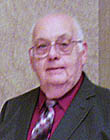|
|
This topic comprises 2 pages: 1 2
|
|
Author
|
Topic: building a sound wall with A7's
|
|
|
|
|
|
|
|
|
|
|
|
|
|
|
|
|
|
|
Steve Guttag
We forgot the crackers Gromit!!!

Posts: 12814
From: Annapolis, MD
Registered: Dec 1999
|
 posted 10-31-2009 03:44 PM
posted 10-31-2009 03:44 PM




Oh my god...STOP...if you don't know the speaker stop advising about it!
The A7, by definition does NOT have a Multi-Cell horn! If it had a Multicell, it would be an A5! The only difference in the bass cabinet between the A5 and the A7 is the driver...with the A7 having the 803 and then later the 416. The A5 always had the 515.
On to the Sectorial horns...which the A7 uses, exclusively. The A7 used two horns...the 811 which used an 800Hz crossover and the 511 which uses a 500Hz crossover. It is properly called the A7-500 and was the Cinema speaker, as Ken pointed out. The reason...the Cinema industry discovered it was best to keep the crossover as far away from the vocal frequencies as possible and 500Hz did this and it was possible to make equipment that could handle it. This is one reason that most any speaker (modern or otherwise) that has crossover points between 500Hz-8KHz have a real hard time with vocal reproduction. Particularly if the frequency is anywhere near 3KHz. MOST 3-way systems suffer from this. The better ones use the same type of driver (compression) between Mid and High to minimize the timber difference between the two. Furthermore a BIG mistake that most speaker companies make is getting the drivers spread too far in the vertical plane. Note on the Altec VOT speakers (any of them)...they bias the LF driver high in the cabinet...not to make it top-heavy but to keep the vertical separation to a minimum...it improves the imaging and reduces lobing. Look at some of the 3-way systems out there...the spread on the MF to HF systems are WAY too far and it really sounds like it.
As to Multicells...they are NOT my favorite horn for MOST applications...anyone that has them still can do a simple test to see why they have problems...turn on pink noise (at a reasonable volume, it need not be high) and walk the auditorium...you will distinctly hear as you walk into and out of each cell. Each seat gets a different timber no matter how you EQ it. The best results are definitely from a multi-mic plex. The Multicell was magical in its day. It allowed very little power to be used over a very large area. The tonal quality of them are also just fine for vocals...the key element in soundtracks. We STILL use the Multicell horn on an A5 system in Baltimore, MD for the Little Italy Film-fest in the summer time. It is the only horn where we can create a single point source and cover about 4 city blocks with reasonable frequency response, with good dialog and also work within the constraints of the space (the speaker is only about 8-feet in the air). If the speakers could be flown higher (and we could use multiple speakers) it is one of the few cases where I would prefer a line-array...probably the most overabused type of speaker system.
The Metal Sectoral horns do have a bit of a metallicness to them. They can be deadened though. Some wrap rubber aound their mounting flange. One solution I saw used expanding foam (on the back side). All you are really trying to do is dampen out the metal so it doesn't vibrate.
ALL A7 speakers can mount their horns either internal or external to the cabinet. Download the A7 Instruction manual from this site. We've installed some of the last cabinets off the Altec line in Oklahoma (cabinets were made in Austin, TX, I think...and were the 828 series). They had the internal mounting bracket and the adjustable port board for internal/external horn mounting. Whenever possible MOUNT THE HORN EXTERNALLY. The bass response is going to be better that way. The cabinet was designed for the horn to be outside but accommodated inside.
There is going to be a dip at about 125Hz on the 825/828 cabinet...DON'T BOOST FOR IT...you'll just rattle the driver. It is where the system transitions from horn to bass-reflex. You will then get a decent response down to 80Hz, and on later systems, down to 50Hz. If you put bass-wings on the system (and I agree...just to the height of the cabinet)...you should get a decent response down to 40Hz on a modern, properly tuned, system.
New Mantaray horns are available, if you desire to go that route. I would suggest going to an A5 system though...put on a 288/299/399 type driver with an MR/594 horn or, if you can find them, an MR94 horn...they remain the best I've ever heard/measured..VERY smooth throughout the coverage area.
Steve
| IP: Logged
|
|
|
|
|
|
|
|
|
|
|
|
|
|
All times are Central (GMT -6:00)
|
This topic comprises 2 pages: 1 2
|
Powered by Infopop Corporation
UBB.classicTM
6.3.1.2
The Film-Tech Forums are designed for various members related to the cinema industry to express their opinions, viewpoints and testimonials on various products, services and events based upon speculation, personal knowledge and factual information through use, therefore all views represented here allow no liability upon the publishers of this web site and the owners of said views assume no liability for any ill will resulting from these postings. The posts made here are for educational as well as entertainment purposes and as such anyone viewing this portion of the website must accept these views as statements of the author of that opinion
and agrees to release the authors from any and all liability.
|

 Home
Home
 Products
Products
 Store
Store
 Forum
Forum
 Warehouse
Warehouse
 Contact Us
Contact Us




 Printer-friendly view of this topic
Printer-friendly view of this topic















